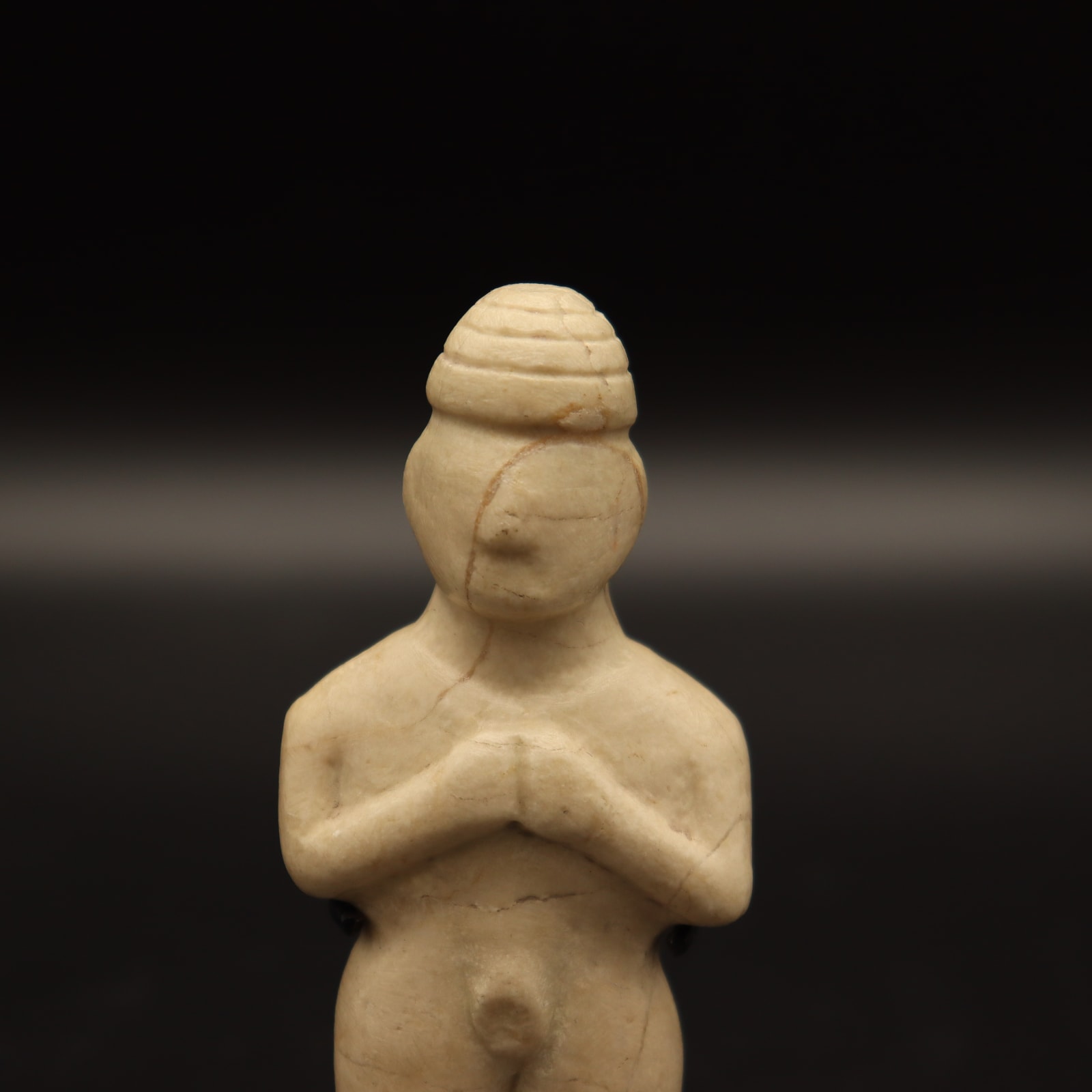Sabean Standing Figure, 900-600 BCE
height 11.5 cm
height 4 1/2 in
Dimensions provided without mounting.
height 4 1/2 in
Dimensions provided without mounting.
LI.3143
Further images
This striking sculpture was probably a commemorative piece from the ancient kingdom of Saba which ruled over the lands of southwestern Arabia, centered in modern day Yemen. Technically, the Sabeans...
This striking sculpture was probably a commemorative piece from the ancient kingdom of Saba which ruled over the lands of southwestern Arabia, centered in modern day Yemen. Technically, the Sabeans were one of four major powers in this area, also including the Minaeans, the Qatabanians and the Hadramites, but the peoples as a whole became subsumed as a single entity by the middle of the first millennium BC. Saba is perhaps better known as Sheba, whose famous Queen was recounted as having visited Solomon in the pages of the Old Testament. The wealth of the kingdom is legendary, and is primarily attributable to Saba’s position at the crossroads of the ancient world, receiving consignments (particularly of incense) from all across the Middle East, Asia and the Mediterranean basin. The city of Marib was also in an ideal position to control the trade route between India to Egypt, although this lucrative venture was cut short in the 1st century AD following the foundation of a nautical route from India directly to the port of Alexandria.
As well as being a highly successful nation state in their own right, the Sabeans embraced the multiplicity of cultural influences they experienced as a trading superpower. Their alphabet – Musnad – was one of the most complex and elegant of the day, while they also had a second, cursive system (Zabur) that was used for day-to-day operations. They mummified their dead, had a pantheon of gods, and possessed liberal attitudes to the deities and traditions of outsiders. They also had a complex social stratification system, extensive public buildings and ceremonial architecture, and a literary/theatrical heritage that survives in fragmented state. It is for their art, however, that the Sabeans are best remembered. Their religion and mythology fuelled the themes of their sculptural works – primarily anthropomorphic and zoomorphic statuary – while their contact with other cultures and nations led to a highly derived and distinctive style. There are major works in bronze, precious metals and exotic minerals, but they are perhaps best known for works in soft stone such as alabaster.
As well as being a highly successful nation state in their own right, the Sabeans embraced the multiplicity of cultural influences they experienced as a trading superpower. Their alphabet – Musnad – was one of the most complex and elegant of the day, while they also had a second, cursive system (Zabur) that was used for day-to-day operations. They mummified their dead, had a pantheon of gods, and possessed liberal attitudes to the deities and traditions of outsiders. They also had a complex social stratification system, extensive public buildings and ceremonial architecture, and a literary/theatrical heritage that survives in fragmented state. It is for their art, however, that the Sabeans are best remembered. Their religion and mythology fuelled the themes of their sculptural works – primarily anthropomorphic and zoomorphic statuary – while their contact with other cultures and nations led to a highly derived and distinctive style. There are major works in bronze, precious metals and exotic minerals, but they are perhaps best known for works in soft stone such as alabaster.









